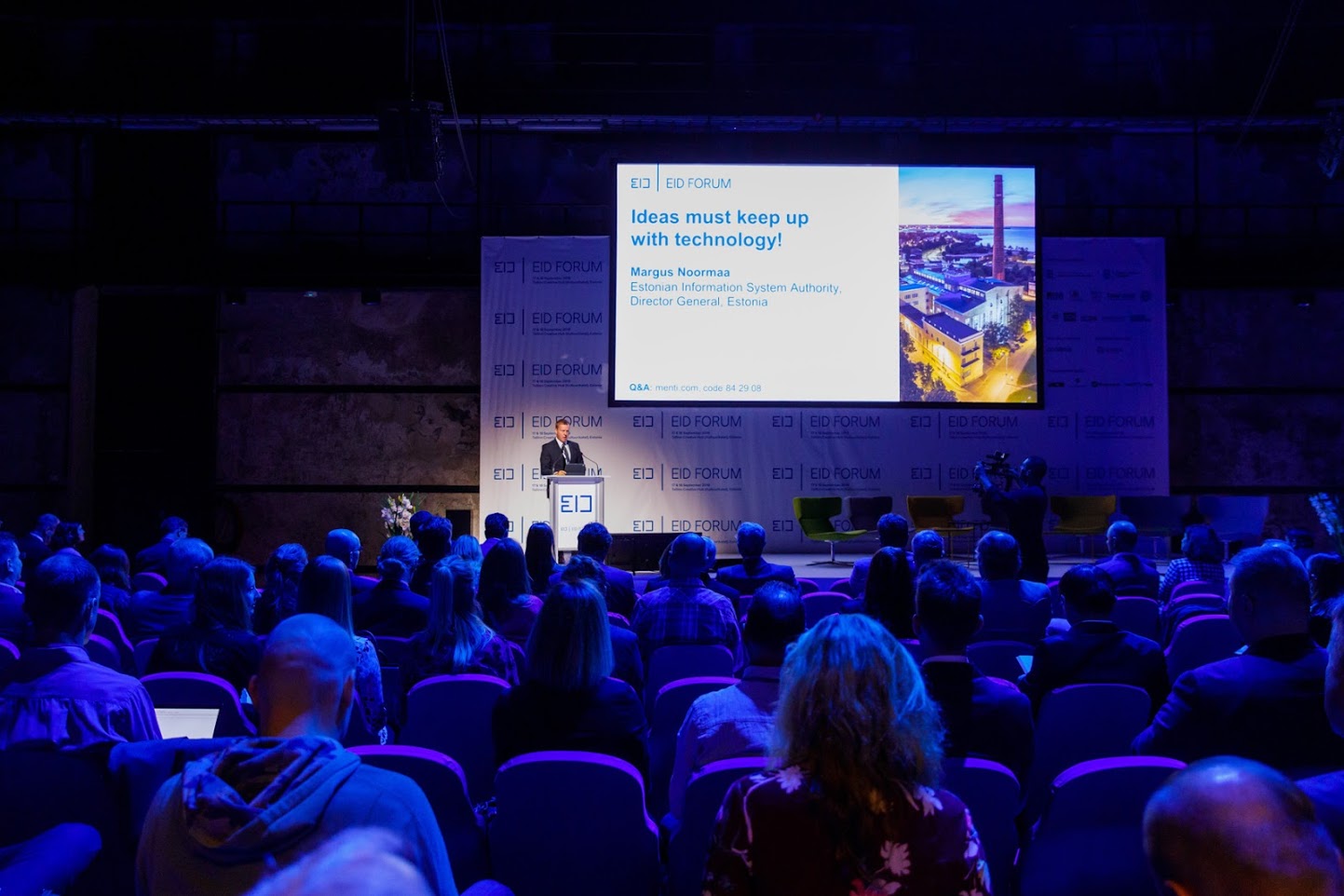In an episode of America’s Got Talent, an aspiring stand-up comedian puts on a despondent expression and sighs “I had my identity stolen. It’s okay. They gave it right back.” That’s funny, right? Except for the fact that in the real world it isn’t funny at all. Your identity is your cultural, familial, emotional, economic, and social anchor, at the very least. So, if your identity is stolen, you don’t get it back just like that. It’s a personal integrity catastrophe that’s very hard to recover from.
eID Forum 2019 in Tallinn
eID Forum 2019 – Shaping the Future of eID took place on 17 and 18 of September in the lovely Hanseatic city of Tallinn. The aim of eID Forum was to bring together representatives from the public (governments) and private (industry) sectors. They achieved a presence of more than 300 participants from 34 countries to share ideas and emphasise the urgency of facilitating trustworthy civil and business digital transactions across national boundaries.

The Forum focused on high-level overviews of the processes and technologies used to develop contemporary eID solutions. We noticed a technology-centric focus and marketing of ready-made solutions. The focus topics for this year were:
- a cross-border digital standard for mobile driving licences,
- the future of digital borders, and face recognition and its use cases in airports, and
- interoperability.
Should you be able to identify yourself or just your right to drive?
Huge efforts are being made to standardise driving licences that can exist in a form other than paper or plastic. But first, what is an eID (e-Identity)? An eID is a unique and immutable digital proof of identity for citizens and for organisations. One’s eID is a right and cannot be suspended or revoked because it is akin to, for example, one’s birth certificate. While an eID’s core attributes must be fundamentally self-sovereign and immutable, a wide variety of attributes can be granted to it and revoked from it. For example, privileges such as holding a driving licence. And one’s eID must be multimodal for use across a variety of digital identification-dependent systems and communication channels.
In Estonia, one does not have to carry any type of driving licence with him/her; not a physical or a mobile version of it. If it is possible to identify the person, then all the needed information can be checked digitally (the right to drive, having insurance, etc). This data exchange has, of course, to be done in a secure way. In Estonia, these data requests are done over the secure data exchange layer known as X-Road, which Gofore has had a role in developing since 2015.
Challenges with interoperability and rapid technological change
The idea behind eID standardisation and interoperability is that government services become more user-friendly, flexible, convenient, and resilient to many kinds of risks caused by otherwise divergent designs and implementations. But despite the fact that electronic identification is regulated in the EU by eIDAS (electronic Identification, authentication and trust services), its implementation in different countries is progressing at significantly varying speed and scope. There was recurring mention by presenters of the urgent need for eID standardisation, whether it be de jure or de facto, and the need for cross-border interoperability of the various eID solutions already in existence.
At the same time, the main challenges concerning eID are, in our opinion, twofold:
- Technological advancements for eID (including secure devices and identification capabilities like face recognition) are evolving fast and we do not know how regulation could keep up in this race.
- Did you know that according to the World Bank Group’s 2018 #ID4D Global Dataset, an estimated one billion people around the globe do not have an identity that they can prove? So for them, provable identity is not just missing in the digital society, it is totally missing. Since they face difficulties in proving who they are, they do not have access to services requiring digital identity. Might we consider having oneself listed in population registers as a human right?
Such fast-paced digital evolution as presented and debated at eID Forum is affecting every organisation in some way or another. We can help you rise to the challenges of fast digital change that you are facing your business domain. We can support you with organisational and technological change. All these consultations are available in Europe or world-wide through your nearest location: Estonia, Finland, UK, Germany or Spain.
References:
https://www.eidforum.org/
https://ec.europa.eu/digital-single-market/en/trust-services-and-eid
https://e-resident.gov.ee/



